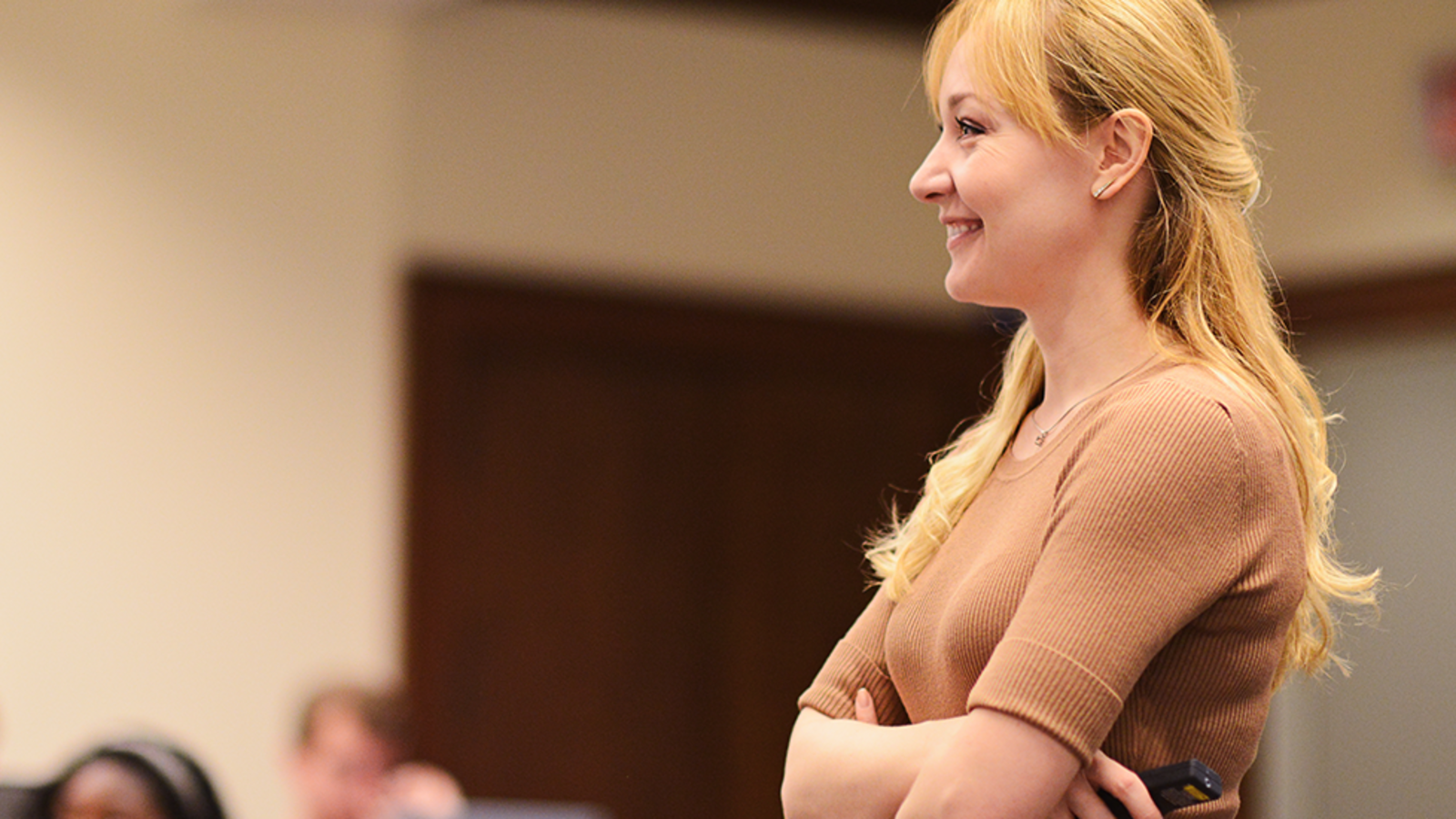Rice U. expert available to comment on Dallas Catholic diocese raid aftermath
Last week’s raid on the Catholic Diocese of Dallas, which police say hasn’t fully cooperated with a sexual abuse investigation, comes in the wake of dozens of Catholic bishops releasing lists of the priests in their dioceses who were credibly accused of child abuse. The raid is symbolic of a crisis of faith in the organization and its leadership, according to a reputation management expert at Rice University’s Jones Graduate School of Business.

Last week’s raid on the Catholic Diocese of Dallas, which police say hasn’t fully cooperated with a sexual abuse investigation, comes in the wake of dozens of Catholic bishops releasing lists of the priests in their dioceses who were credibly accused of child abuse.
The raid is symbolic of a crisis of faith in the organization and its leadership, according to a reputation management expert at Rice University’s Jones Graduate School of Business.
Anastasiya (Annie) Zavyalova, associate professor of strategic management at Rice Business, is available to discuss Catholic dioceses’ crisis and reputation management with the media. Zavyalova said releasing the names has been a small step in the right direction, particularly toward healing relations with parishioners.
In Dallas, trust repair will be a long-term process, Zavyalova said. “Its effectiveness will be contingent on who drives the process: In this situation, in order to work, the repair will have to be initiated by the laity, not by those in power at the church,” she said.
Zavyalova’s recent research includes an in-progress study of how parishioners reacted to the names of priests released by the Archdiocese of Philadelphia in 2005. Her general research focuses on negative events in organizations and the role of the media and organizational identification for stakeholder support following such incidents.
To schedule an interview with Zavyalova, contact Jeff Falk, associate director of national media relations at Rice, at jfalk@rice.edu or 713-348-6775.
Rice University has a VideoLink ReadyCam TV interview studio. ReadyCam is capable of transmitting broadcast-quality standard-definition and high-definition video directly to all news media organizations around the world 24/7.
Follow the Jones Graduate School of Business on Twitter @Rice_Biz.
Follow Rice News and Media Relations on Twitter @RiceUNews.
Related materials:
Zavyalova bio: http://business.rice.edu/person/anastasiya-zavyalova
Jones Graduate School of Business: http://business.rice.edu
Governor Abbott names vice chair and appoints five to OneStar National Service Commission
Governor Greg Abbott has appointed Rice Business adjunct professor Ronnie Hagerty, Ph.D., along with Lonnie Hsia and Lori Stevens and reappointed Kirk Beckert, and Roger O’Dell to the OneStar National Service Commission for terms set to expire on March 3, 2021.
Rice University researcher finds ways to spark epiphanies crucial to growing a business
So how do people make sense of the epiphanies when they experience them? In a set of unprecedented studies, Rice Business professor Erik Dane set out to find answers, first examining people who'd experienced general epiphanies, then analyzing a set of accounts of work- and career-related epiphanies themselves.
Trade war could delay LNG projects on Gulf Coast, analyst says
Escalating trade tensions with China could jeopardize or delay proposed liquefied natural gas projects on the Gulf Coast by raising construction costs in the United States and prices in China, hurting the emerging industry's competitiveness in one of the world's biggest energy markets, analysts and economists say. The trade war adds uncertainty into long-term planning for energy projects, said Peter Rodriguez, dean of the Jesse H. Jones Graduate School of Business at Rice University.
How Weatherford went from fourth largest oilfield service company to Chapter 11
Two decades ago, two oilfield services rivals merged to create a company with big ambitions. Rice University Business Professor Vikas Mittal said oilfield service companies cannot only rely on higher oil prices alone. Based on past studies and industry surveys, Mittal said oilfield service companies would see a better return on their investments by improving customer service and listening to their needs, rather than spending money developing new technology and products. Smaller service companies, he said, need to merge, lower their costs and improve customer service to compete with larger ones.
Not 'just a poker game': A look back at the dramatic bidding war for Anadarko
"Traditionally you might have seen Chevron as the loser in this case. But I don't think so at all. I think it really burnishes their reputation, and they've got a war chest if they see some other assets," Rice University professor of energy management Bill Arnold said on the outcome of the competition between Occidental Petroleum and Chevron Corp. for rival oil and gas producer Anadarko Petroleum Corp. Chevron's shares climbed 3.1% the day it walked away from the deal.
Rice University to launch executive education program in The Woodlands
Rice University’s Jesse H. Jones Graduate School of Business plans to launch its first open enrollment off-campus program in The Woodlands this fall, responding to demand for its executive education programs for those in business and leadership roles. Executive education consists of non-degree programs for working professionals in management or executive roles, said Zoran Perunovic, director of executive education at Rice Business School.
How we chose the 2019 CNBC Disruptor 50 innovators
Yael Hochberg, Head of Entrepreneurship Initiative, Rice University is on the The 2019 CNBC Disruptor 50 Advisory Council
Can you really be yourself at work?
Do you feel like you're able to be fully yourself at work? “In our research, we’ve talked to a lot of employees who feel like they’re concealing a ‘stigma,’ and in many of those cases we’ve seen that there’s a real cost to hiding,” says Mikki Hebl, PhD, a management professor and the Martha and Henry Malcolm Lovett Chair of psychology at Rice University.
Occidental emerges as winner after energy giants angle for Anadarko merger
William Arnold, a professor in the practice of energy management at Rice University’s graduate school of business, said if Chevron acquires the company it could signal an opportunity for a new stage in the area’s evolution as an energy employer.